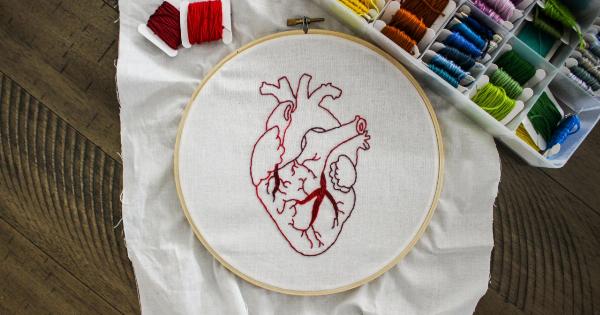Sleep is a fundamental process in the human body that allows for restoration, recovery, and growth. It is a complex and dynamic state that impacts various physiological systems, including the cardiovascular system.
While asleep, our bodies continue to function and adapt to our environment, even when we are unconscious and seemingly vulnerable. One fascinating aspect of sleep is the way our hearts have evolved to expertly sense and respond to potential threats, ensuring our survival. In this article, we will explore how the heart detects and reacts to danger while we are asleep.
The Cardiovascular System: A Lifeline for Survival
The cardiovascular system plays a crucial role in supplying oxygen and nutrients to every part of our body. Composed of the heart, blood vessels, and blood, it ensures the proper functioning of all organs and tissues.
The heart, in particular, acts as a powerful pump that circulates blood throughout the body, delivering oxygenated blood to organs and tissues and removing waste products.
During sleep, when our body enters a state of rest, the cardiovascular system continues to operate, but with some notable changes. Heart rate and blood pressure naturally decrease, creating a more relaxed state.
However, this does not mean that the heart remains entirely dormant during sleep. On the contrary, it remains vigilant, ready to react to potential dangers that could arise.
The Fight or Flight Response: A Protective Mechanism
The fight or flight response is a crucial survival mechanism that enables organisms to respond rapidly to threatening situations.
Typically associated with the activation of the sympathetic nervous system, this response triggers a cascade of physiological changes that prepare the body for action. In situations of danger, such as encountering a predator, the body releases stress hormones, including cortisol, which increases heart rate, blood pressure, and boosts energy levels.
Interestingly, even during sleep, the fight or flight response remains active, albeit to a lesser extent. The heart continues to sense potential threats and reacts accordingly.
Research suggests that the heart’s ability to detect impending danger during sleep is a result of its intricate connection with the brain.
Brain-Heart Communication during Sleep
The brain-heart connection is vital for our survival, especially during sleep when external threats are harder to detect.
The brain, responsible for processing sensory information, assesses potential dangers and signals the heart to respond appropriately. This communication occurs through the autonomic nervous system.
The autonomic nervous system consists of two branches: the sympathetic and parasympathetic nervous systems. The sympathetic branch triggers the fight or flight response, while the parasympathetic branch promotes rest and relaxation.
Both systems work together to maintain balance and adjust our physiological responses depending on the situation.
Heart Rate Variability: A Window into Threat Detection
Heart rate variability (HRV) is a measure of the variation in the time interval between successive heartbeats. It provides insights into the physiological state of the body and its ability to respond to environmental challenges.
HRV acts as a window into threat detection during sleep.
Recent studies have shown that changes in HRV during sleep can indicate potential threats. When exposed to arousing or threatening stimuli, such as loud noises or sudden temperature changes, the heart responds by increasing its HRV.
This increase signifies heightened vigilance and prepares the body to react appropriately if needed.
The Role of Cortisol in Threat Sensing
Cortisol, often referred to as the stress hormone, is secreted by the adrenal glands and plays a vital role in our body’s response to stress. During sleep, cortisol levels remain relatively low compared to wakeful periods.
However, they can quickly rise in response to potential threats.
Studies have shown that cortisol exhibits a diurnal pattern, with its highest levels typically occurring in the early morning. This pattern aligns with our natural sleep cycle and prepares the body for waking up and facing potential threats.
Cortisol levels during sleep help ensure a swift and efficient response to any dangers that may arise.
Sleep Disorders: Impact on Threat Detection
Disruptions to the sleep cycle, such as sleep disorders, can interfere with the heart’s ability to sense and respond to threats effectively.
Sleep disorders like insomnia or sleep apnea often result in fragmented or poor-quality sleep, leading to a range of cardiovascular issues.
When sleep is compromised, the heart may not receive adequate rest or function optimally, impairing its ability to detect potential threats. This can lead to an increased risk of cardiovascular events and a weakened overall response to danger.
The Importance of Sleep for Threat Detection and Survival
Sleep is vital not only for our overall well-being but also for our survival. The ability of the heart to expertly sense and respond to threats during sleep ensures our safety, even in a vulnerable state.
It highlights the intricate connection between the brain and heart and the importance of maintaining a healthy sleep cycle.
As we continue to unravel the complexities of sleep and the cardiovascular system, further understanding of threat detection during sleep may contribute to the development of novel diagnostic tools and therapeutic interventions for sleep disorders and related cardiovascular issues.





























